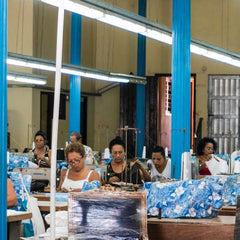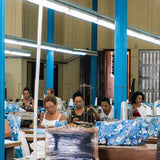Have you dreamed about having a green roof on your home, garden shed or shop? Many people have successfully designed new and retrofitted old roofs into green roofs to support plant life, insulate homes, and make the world a greener place. Leslie Doyle can show you how to do it in Essential Green Roof Construction: The Complete Step-by-Step Guide. While we move through our holiday sale, today we're dreaming of a green roof that isn't only beautiful and insulating but is also capable of growing food. Places such as Noble Rot Restaurant in Portland, Oregon (USA) and Ryerson Urban Farm in Toronto, Ontario (Canada) are already producing food on their roofs. Check out some of the considerations on food production roofs below!
Remember all titles* between November 16-24 are 50% off for our 2023 Holiday Sale! So go ahead, and start that dream project. Our books can show you how! Use the code: Dream50 at checkout.
*(Not applicable to New Catalyst titles or titles not yet off press)
Food Production Roofs
Concerns over food security have prompted the growth of interest in rooftop food production. It is an obvious choice: roofs are typically large, underutilized surfaces with full sun exposure and low slopes. The biggest challenges are getting adequate access to the roof and a building’s available weight load. You can plan a roof for food production, or, like one roof featured later in this chapter, you can convert an existing “passive” green roof into one that yields food. To create a food production roof, you should first understand the information given in Chapters 8 and 9 for creating a green roof. However, there are a few differences between a planted green roof and a food production roof.
More Blogs from New Society Publishers
Introduction to Green Roofs
Natural Plasters and Climate Change: Plastering in a New Paradigm
A Case for Building Science
A Stronger Roof is Needed for Additional Loading Capacity
- Unlike a 4-inch extensive roof, you will need to plan for a minimum of 6–8 inches if you want to grow a variety of produce. This provides greater water retention and nutrient availability, as well as a suitable depth. Depending on the roof design, some deeper substrates or even heavier pots can be placed around the perimeter of the roof or on point loads.
- Live loads need to account for frequent maintenance personnel and potential visitors.
- Maintenance of a food production roof requires small hand tools and/or buckets. Try to create a permanent safe spot for these on the roof to eliminate the need to repeatedly haul them up and down.
A food roof. Photo Credit: Restoration Gardens
Occupancy Permits May Be Required
- Municipalities differ in regard to their permit requirements for installing a green roof. While passive green roofs with traditional plantings require only a few annual maintenance visits, food roofs require constant attention; production relies on a high frequency of visitations. Therefore, you must consult with your local municipality for any additional approvals required. Some jurisdictions may require changes to an occupancy permit and some may request zoning variances. Local building codes will dictate additional safety and fire compliance, such as permanent safety barriers and means of egress.
Permanent and Clean Irrigation Is Needed
- Permanent irrigation is required for these thirsty rooftop plants. For a small roof, a hose and nozzle are sufficient. For larger roofs, consider drip irrigation.
-
Harvesting rainwater is a sustainable option for watering plants. However, when you are watering edible plants, consider the following:
- Avoid collecting water from treated wood shake roofs; these contain arsenic and elevated cadmium and copper. They can also leach phthalates.
- Avoid collecting from copper roofs or roofs with copper flashing, copper sulfate impregnated fabrics, or copper foil materials. The copper can easily leach into the collected rainwater.
- Collecting water from a green roof will recycle any nutrients that leach back into the system but may collect other leachates from roofing materials. While some studies have shown these will not affect your crops, you may want to do more research into your chosen products and look for materials that are food-grade.
- Place irrigation lines in the soil rather than irrigating plants directly. This will help filter any contaminants.
What was once a passive green roof filled with daylilies was converted into a productive space by students at Ryerson University— accomplished, in large part, simply by raking the growing media into mounded rows. Photo Credit: Leslie Doyle
Maintenance Pathways Are a Bigger Benefit
- Instead of pathways only around the perimeter of the roof, vegetable rooftop gardens benefit from having pathways throughout. They allow you to maximize the growing spaces without compacting the soil as you move along. These extra pathways also reduce the spaces where weeds can grow.
Environmental Exposures Are More Critical
- Some varieties of leaf lettuce and herbs need some relief from the hot sun.
- More delicate plants will need protection from the wind. Try wind-blocking with stronger plants or installing trellises.
The Noble Rot Restaurant Rooftop consists of a mix of traditional extensive green roofs, raised beds on the roof deck, and perimeter high beds with trellises to support plants.
Soil Fertility Needs to Be Higher
- Unlike the aggregate-based soils promoted for extensive green roofs, vegetable roofs will require more initial organics. In addition, you will need to provide a reliable organic amendment annually, perhaps even biennially. Both macro and micronutrients are vital for growing food. When I visited Eagle Street Rooftop Farm (New York) in 2011, they had their own composting system on the roof—complete with manure-producing chickens! At that point, Eagle Street’s growing media contained a 40:60 percent ratio of organic to inorganic material. In the Color Section, Photo, you can see a comparison of Ryerson Urban Farm’s (Toronto) organic soil compared to some newly installed aggregate mix.
- Consider the logistics when designing this type of roof. For example, how will you get materials onto the roof when they’re needed? How can you situate compost piles so they sit over point loads?
- Depending on the size of the garden and the intent for growing, some owners may want to do a thorough investigation of the soil nutrients by having it assessed by a lab. This will determine any deficiencies in the soil in terms of macro and micronutrients.
Soil comparision
Weeding Is a Must
-
Because weeds compete for nutrients, there is more of a need to weed a food roof than a traditional extensive or semi-intensive roof. Finding an efficient method will be key to keeping the workload light.Suggested Crops Some key lessons from those who grow on the roof include:
- To optimize available resources, favor plants with high yield that take up less space. Plant items like tomatoes, peppers, lettuce, and herbs—not squashes or watermelons.
- Plant items that can take advantage of height with trellises and supports—these will also provide much-needed shade structures on the roof, and/or they can be lined up to create windbreaks.
- If your access to the roof is not quick and effortless, do not plant your everyday kitchen items such as herbs and fresh lettuces on the roof.
- Choose dwarf varieties of crops if they are suitable for your climate
Weeding
Leslie Doyle
Leslie Doyle is the owner of Restoration Gardens Inc., a green roof design and installation firm. She is an instructor, a certified LiveRoof Installer, and is an accredited Green Roof Professional by the Industry Association, Green Roofs for Healthy Cities. Leslie resides in Toronto, Ontario.
Margaret Stout
Margaret Stout is Professor of Public Administration at West Virginia University. Her research explores the role of public and nonprofit practitioners in achieving social, economic, and environmental justice and sustainability. She is internationally recognized for her contributions to the field of public administration and governance studies.
Maria Spiliotopoulou
Dr. Maria Spiliotopoulou has a PhD in sustainable community development viewed through the lens of holistic, regenerative sustainability. She is a lifelong learner, passionate about sustainability action and regenerative and sustainable systems education, and strives to help create regenerative and sustainable societies.





